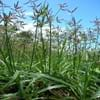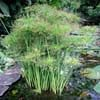Life Span
Perennial
Perennial
Origin
Japan
North America, United States, Northeastern United States, Mid-Atlantic United States, Southeastern United States, North-Central United States, Central United States, South-Central United States, Canada
Types
Not Available
Autumn Flame, October Brilliance, Tiliford
Habitat
Lawn, shaded fields, Shaded sites
Forests, Wide range of ecological site
USDA Hardiness Zone
5-10
3-9
Sunset Zone
3a, 3b, 4, 5, 6, 7, 8, 9, 14, 15, 16, 17, 18, 19, 20, 21, 22, 23, 24
A2, A3, 1a, 1b, 2a, 2b, 3a, 3b, 4, 5, 6, 7, 8, 9, 14, 15, 16, 17
Habit
Clump-Forming
Oval or Rounded
Flower Color Modifier
Bicolor
Bicolor
Fruit Color
Brown
Red, Green, Brown
Leaf Color in Spring
Dark Green, Gold
Light Green
Leaf Color in Summer
Dark Green, Gold
Green, Dark Green
Leaf Color in Fall
Dark Green, Gold
Yellow, Red, Orange, Yellow green, Gold, Dark Red, Orange Red
Leaf Color in Winter
Dark Green, Gold
Not Available
Leaf Shape
Subulate
Maple shaped
Plant Season
Spring, Summer, Fall, Winter
Spring, Summer, Fall
Sunlight
Partial shade, Full Shade
Full Sun, Partial Sun
Growth Rate
Medium
Medium
Type of Soil
Clay, Loam, Sand
Clay, Loam, Sand
The pH of Soil
Acidic, Neutral
Acidic, Neutral, Alkaline
Soil Drainage
Well drained
Average
Bloom Time
Late Spring
Early Spring, Spring
Tolerances
Drought
Wet Site, Soil Compaction
Where to Plant?
Ground, Pot
Ground
How to Plant?
Rooted stem cutting, stem tip cuttings
Seedlings, Vegetative Reproduction
Plant Maintenance
Medium
Medium
Watering Requirements
Needs more water during establishment, Water Deeply, Water in morning to avoid prompting diseases, Water in the early morning hours
Water Deeply, Water when top layer of soil becomes dry
In Summer
Lots of watering
Lots of watering
In Spring
Moderate
Moderate
In Winter
Average Water
Average Water
Soil pH
Acidic, Neutral
Acidic, Neutral, Alkaline
Soil Type
Clay, Loam, Sand
Clay, Loam, Sand
Soil Drainage Capacity
Well drained
Average
Sun Exposure
Partial shade, Full Shade
Full Sun, Partial Sun
Pruning
Prune to control growth
Remove dead branches, Remove dead leaves
Fertilizers
All-Purpose Liquid Fertilizer, Apply N-P-K, Less fertilizing
General garden fertilizer, No need to fertilize every year
Pests and Diseases
Insects, Red blotch
Anthracnose, Bleeding canker, Decline, Fomes root rot, Ganoderma root rot, Laetiporus root rot, Leaf spot, Powdery mildew, Tar spot, Verticillium Wilt
Plant Tolerance
Drought, Rocky Soil, Shade areas, Variety of soil types, Wet Site
Soil Compaction, Wet Site
Flowers
Insignificant
Insignificant
Flower Petal Number
Single
Single
Foliage Texture
Fine
Medium
Foliage Sheen
Glossy
Matte
Attracts
Aphids, Bugs, Mealybugs, Scale Insects
Not Available
Allergy
Not Available
breathing problems, Eczema, flushing of face, Hives, Low blood pressure, Oral cavity, Rapid Heartbeat, Runny nose, Watery eyes
Aesthetic Uses
Beautification, Borders, Ground Cover, Landscape Designing
Showy Purposes
Beauty Benefits
Not Available
Not Available
Environmental Uses
Air purification
Air purification, Wildlife
Medicinal Uses
Not Available
Not Available
Part of Plant Used
Leaves
Whole plant
Other Uses
Not Available
Edible syrup, Used as Ornamental plant
Used As Indoor Plant
Yes
Yes
Used As Outdoor Plant
Yes
Yes
Garden Design
Container, Edging, Groundcover, Mixed Border, Rock Garden / Wall
Feature Plant, Shade Trees, Street Trees
Botanical Name
CAREX hachijoensis 'Evergold'
ACER rubrum
Common Name
Carex oshimensis
Carex morrowii
Northern Red Maple, Red Maple
In Hindi
Japanese Sedge
लाल मेपल के पेड़
In German
japanische Segge
Red Maple Tree
In French
Japanese carex
Red Maple Tree
In Spanish
juncia japonesa
Árbol de arce rojo
In Greek
japanische Segge
Red Maple Tree
In Portuguese
Sedge japonês
Árvore de bordo vermelho
In Polish
japoński turzyca
Red Maple Tree
In Latin
Sedge Italica
Rubrum Maple ligno
Phylum
Tracheophyta
Magnoliophyta
Class
Magnoliopsida
Magnoliopsida
Family
Cyperaceae
Aceraceae
Clade
Angiosperms, Commelinids, Monocots
Angiosperms, Eudicots, Rosids
Tribe
Not Available
Not Available
Subfamily
Not Available
Not Available
Number of Species
Not Available
Importance of Japanese Sedge and Red Maple Tree
Want to have the most appropriate plant for your garden? You might want to know the importance of Japanese Sedge and Red Maple Tree. Basically, these two plants vary in many aspects. Compare Japanese Sedge and Red Maple Tree as they differ in many characteristics such as their life, care, benefits, facts, etc. Every gardener must at least have the slightest clue about the plants he wants to plant in his garden. Compare their benefits, which differ in many ways like facts and uses. The medicinal use of Japanese Sedge is Not Available whereas of Red Maple Tree is Not Available. Japanese Sedge has beauty benefits as follows: Not Available while Red Maple Tree has beauty benefits as follows: Not Available.
Compare Facts of Japanese Sedge vs Red Maple Tree
How to choose the best garden plant for your garden depending upon its facts? Here garden plant comparison will help you to solve this query. Compare the facts of Japanese Sedge vs Red Maple Tree and know which one to choose. As garden plants have benefits and other uses, allergy is also a major drawback of plants for some people. Allergic reactions of Japanese Sedge are Not Available whereas of Red Maple Tree have breathing problems, Eczema, flushing of face, Hives, Low blood pressure, Oral cavity, Rapid Heartbeat, Runny nose and Watery eyes respectively. Having a fruit bearing plant in your garden can be a plus point of your garden. Japanese Sedge has no showy fruits and Red Maple Tree has no showy fruits. Also Japanese Sedge is not flowering and Red Maple Tree is not flowering . You can compare Japanese Sedge and Red Maple Tree facts and facts of other plants too.





